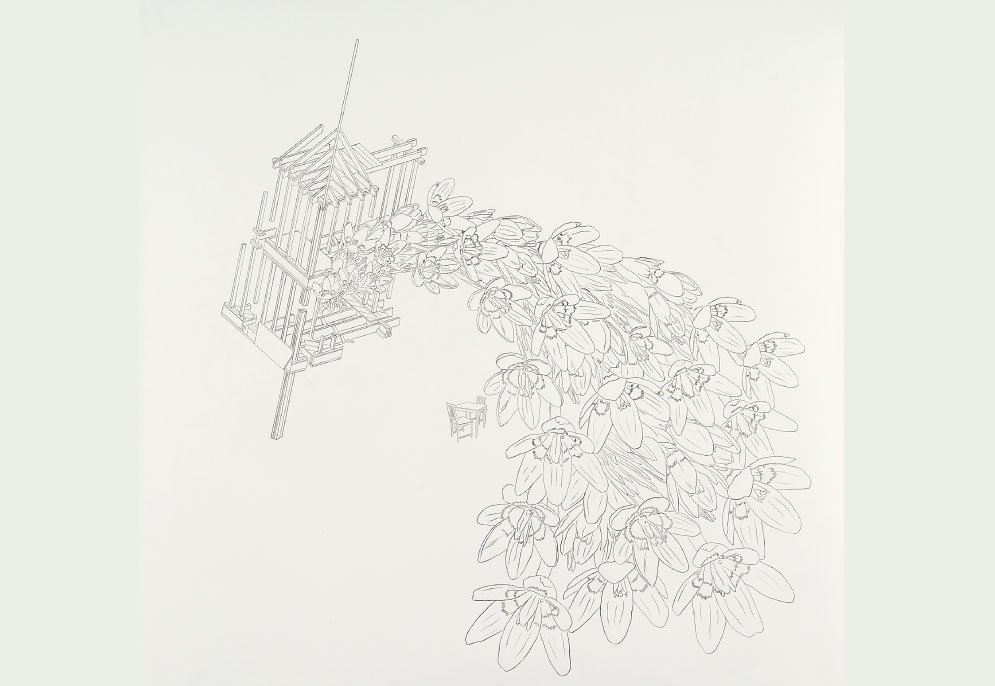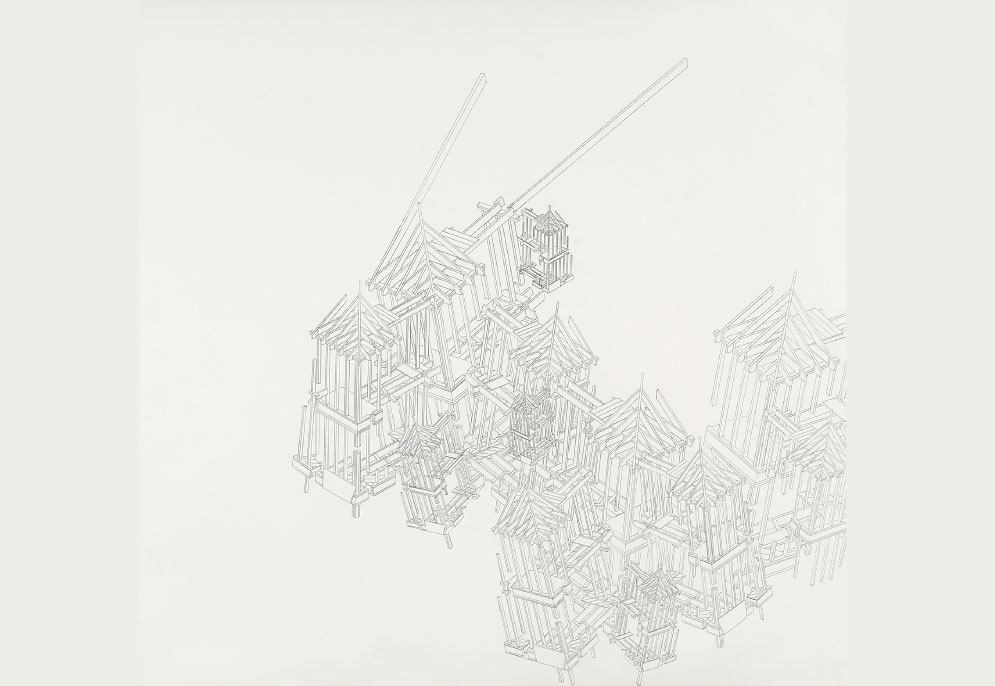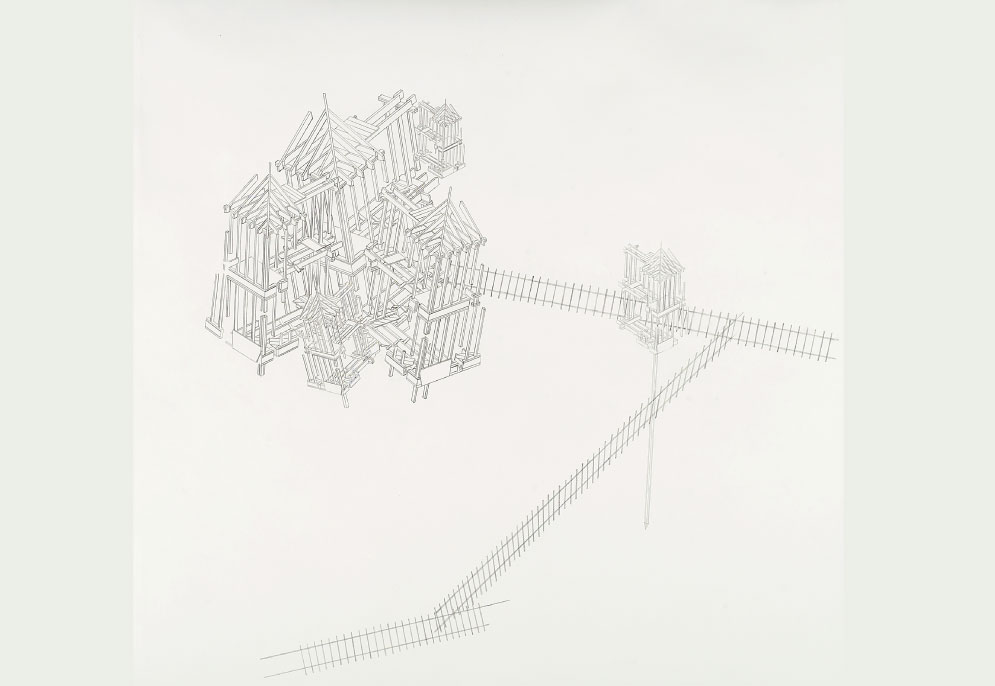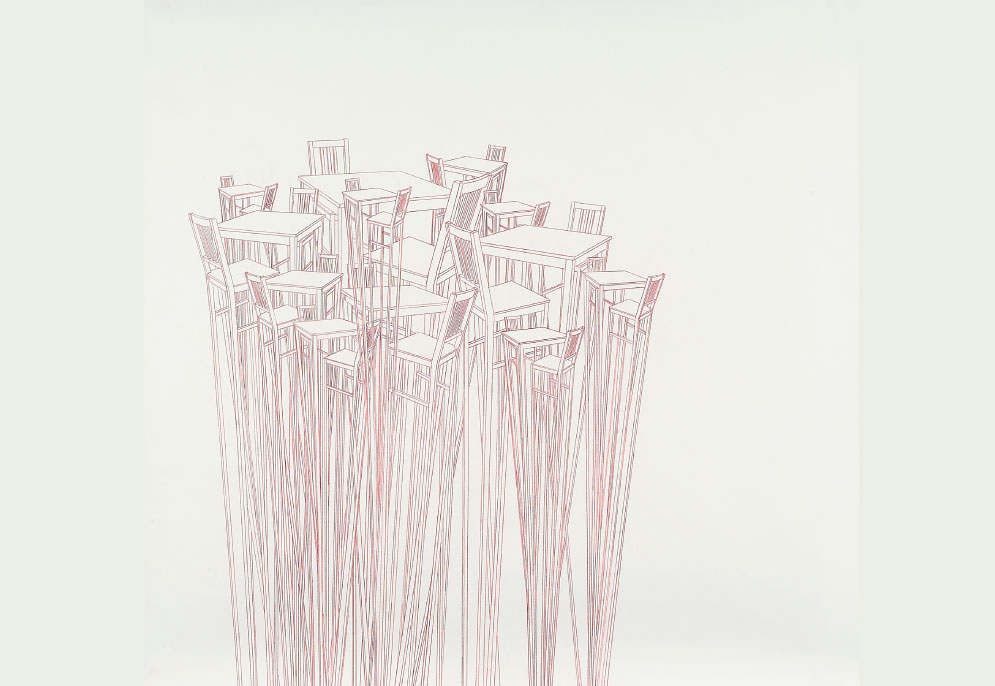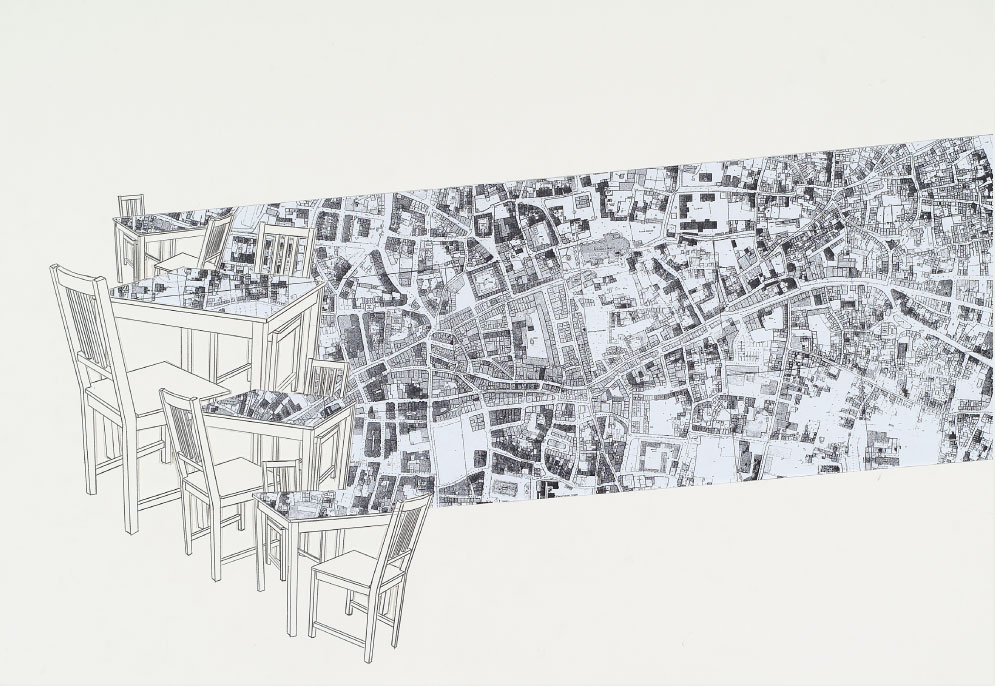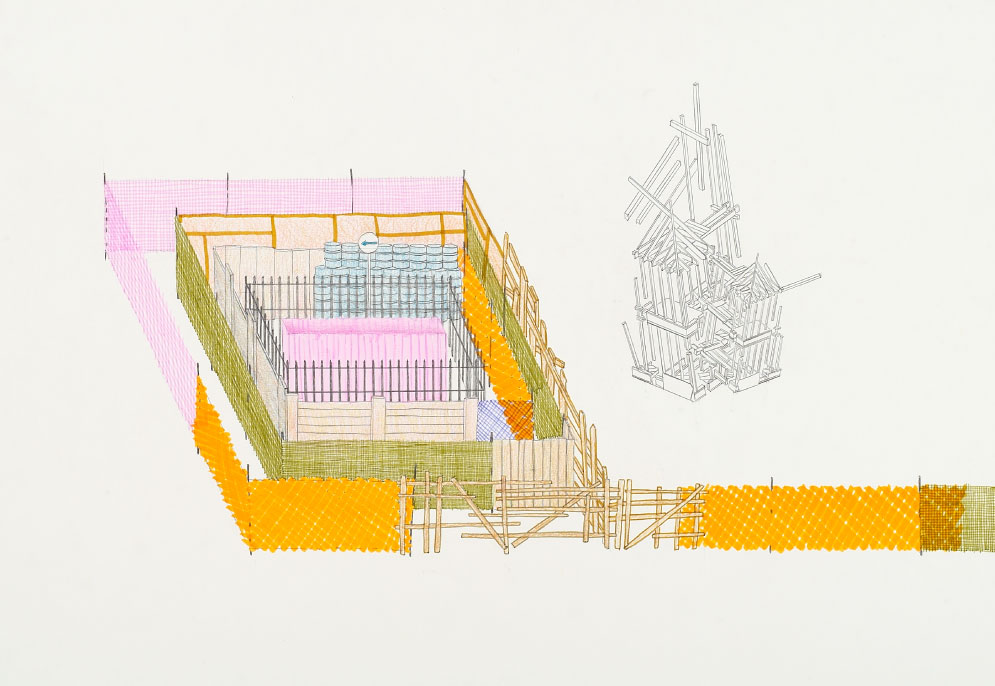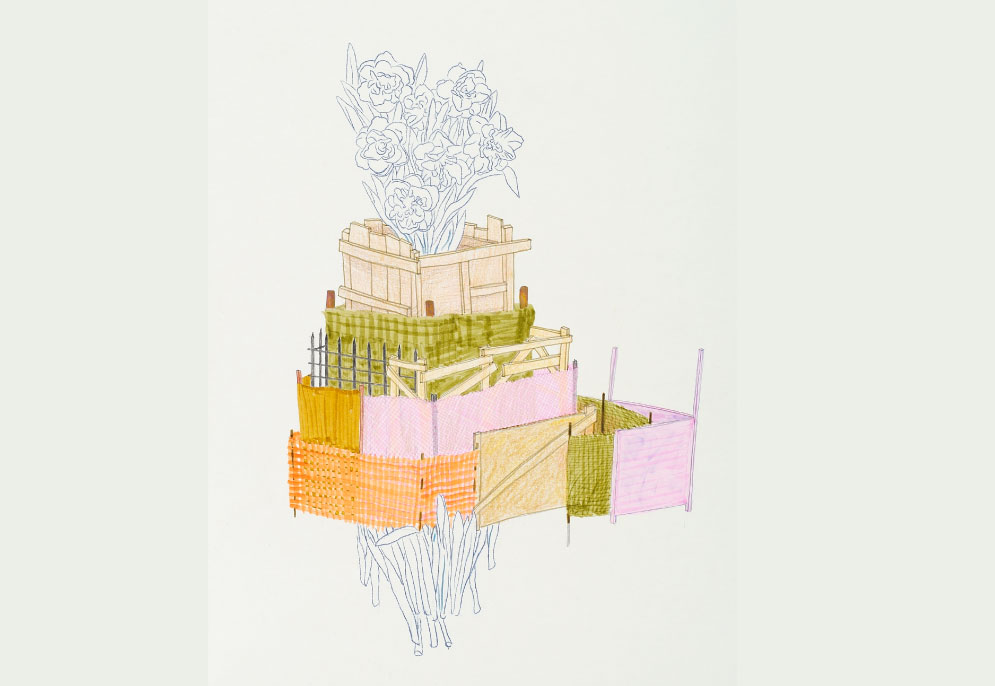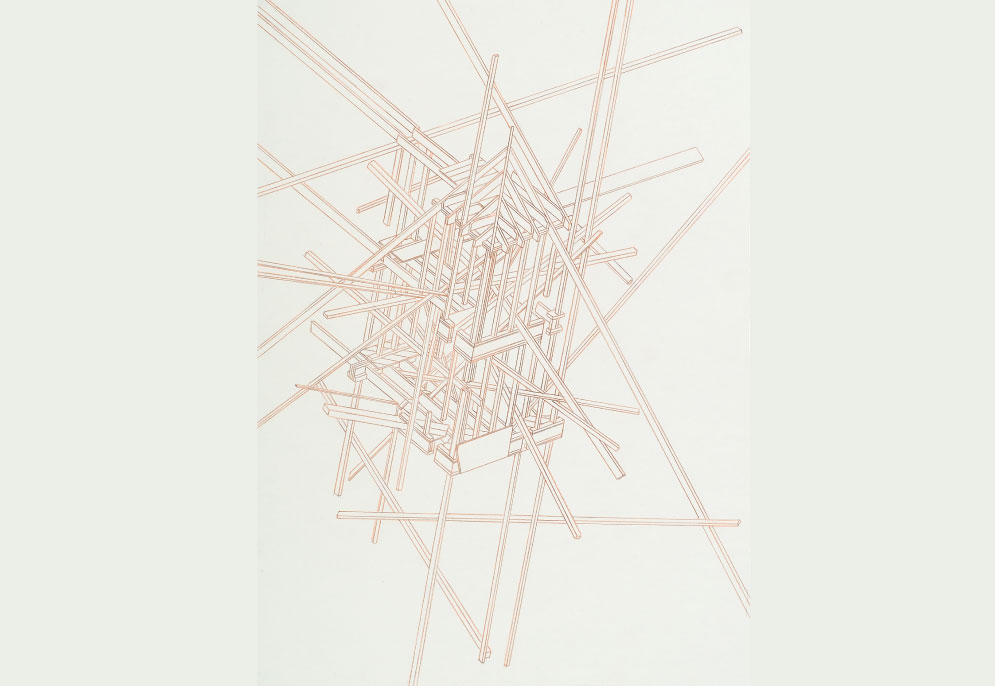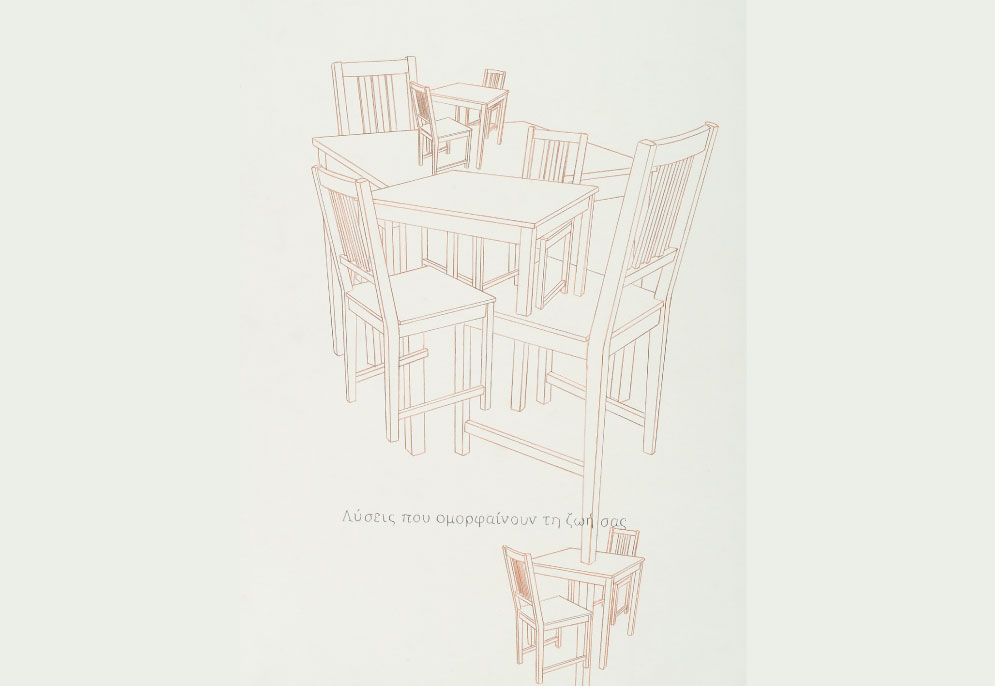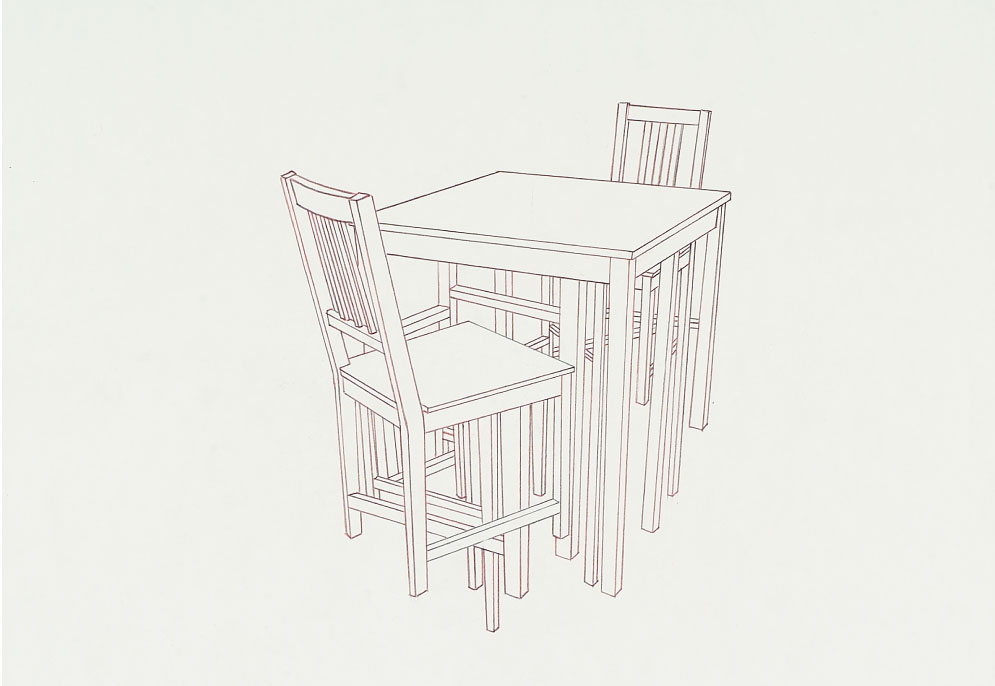Solutions that make life beautiful 2007
Allegra Ravizza Art Project, Milan, Italy; curated by Luca Nona
Artistic practice for Panayiotis Michael is an ethical choice, conceived as a critique of the visible, and a reflection on political and social events, in order to understand their complexity through an articulation that cannot have the qualities of press reports.
The artist, who represented Cyprus at the 51st Biennale of Venice, combines drawings, photocopies and collages, intervening on the exhibition space with virtual architectures that explore possibilities from other worlds. Although he recalls in some way the socio-political situation of Cyprus, Panayiotis Michael’s art is able to be “representational” without escaping a search for an intriguing aesthetic language. It is characterized by a light touch; it is essential and at the same time, “abundant”. His design expands through space – through a process of copy/paste – and is no longer the precursor of a work of art that will then be realized through other media, but is called to interpret, re-project and in certain ways, re-build the world. Natural fragments, decontextualized and inserted in the composition are transformed in their dimensions, and evolve the natural in the symbolic. The unstoppable growth of nature is confronted with the formal rigor of the architecture, overwhelming it or creating hybrids and grafts, like when a chair or a table bloom like flowers growing out of vegetal elements.
The drawing is the central part of Panayiotis Michael’s art because the environmental installations remain two-dimensional, even if they are characterized by a tendency to “cross the border”. Between the artwork and the exhibition space there is no continuity; there is a dialectical rapport between the “real” and “virtual” that tends towards camouflaging. The trait and the style recall the fragile elegance of the grotesque of the sixteenth century, an art that unified the Greek grace and the oriental motifs, deriving inspiration from the magical caverns of ancient Rome. A parallel with the grotesque is also signified by the union between a performed spontaneity and practical repetitiveness.
Right in the field of decoration in the fifteenth century, the use of “means of technical reproducibility” became a normal and diffused practice. Like the plaster cast and masks from that time, the photocopy gives Panayiotis Michael’s art a new impulse towards the “ornamental epidemic”, towards the “epilepsy of the sense and the of the shape” (Hocke), towards the game between reality and fiction. The images transcend one another like a dream, breaking all laws of logic and nature. The style alludes to that of the mannerists, capable of emulating the activity of a brain that elaborates fantasies, untired and volatile like a butterfly (Pinelli). The juxtaposition of images apparently unrelated is derived from a type of “lateral thinking”, typical of “problem solving”. The formal search of Panayiotis Michael’s work is, in fact, not only related to the “social” contents, but is functional within them.
Luca Vona, curator
Exhibition History
2007 Solutions that make life beautiful, Allegra Ravizza Art Project, Milan, Italy; curated by Luca Nona
2007 MIART art fair, Milan, Italy.
2009 Fuori_Nonluogo, Novalis Contemporary Art, Turin, Italy.
Participating artists: Carlos Aires, Claudio Massini, Panayiotis Michael

